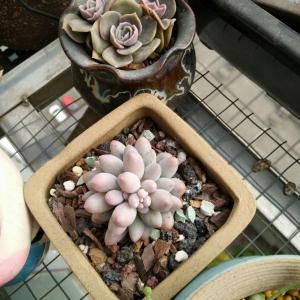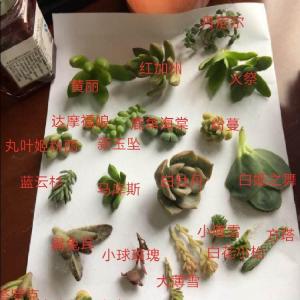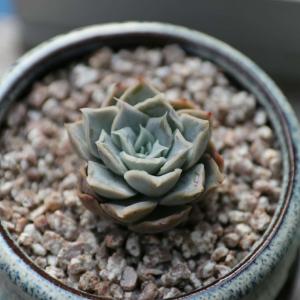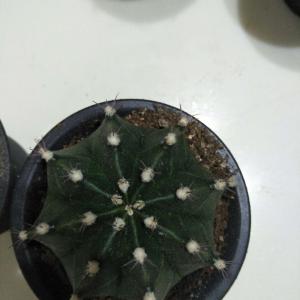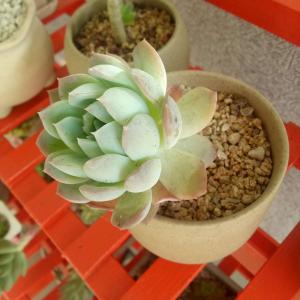文章
Miss Chen
2017年11月27日

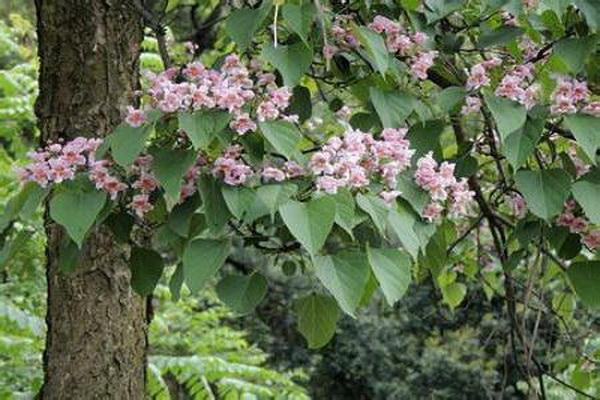
楸,紫葳科小乔木,高8-12米。叶三角状卵形或卵状长圆形,宽达8厘米,顶端长渐尖,基部截形,阔楔形或心形,叶面深绿色,叶背无毛;叶柄长2-8厘米。顶生伞房状总状花序,有花2-12朵。花萼蕾时圆球形,顶端有尖齿。花冠淡红色,内面具有2黄色条纹及暗紫色斑点。蒴果线形。种子狭长椭圆形,长约1厘米,宽约2厘米,两端生长毛。花期5-6月,果期6-10月。
产中国河北、河南、山东、山西、陕西、甘肃、江苏、浙江、湖南。在广西、贵州、云南栽培。该种性喜肥土,生长迅速,树干通直,木材坚硬,为良好的建筑用材,可栽培作观赏树、行道树,用根蘗繁殖。花可炒食,叶可喂猪。茎皮、叶、种子入药,果实味苦性凉,清热利尿,主治尿路结石、尿路感染、热毒疮廊,孕妇忌用。
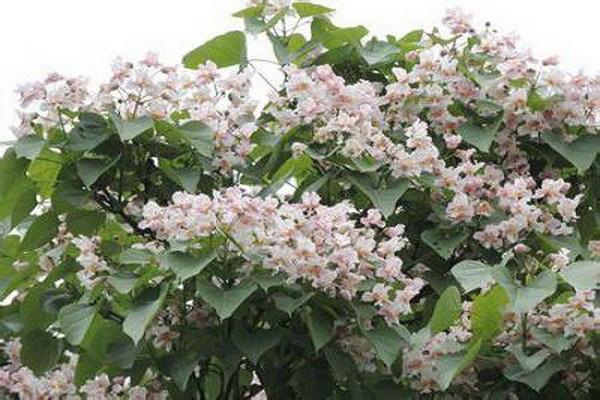
楸树的观赏价值
楸树花色淡雅、枝条遒劲挺拔,自古以来就被广泛栽植,无论是皇宫庭院还是胜景名园到处都可见到楸树的影子,因其树形优美、花色淡雅,在枝条、树形等方面都独具风姿,可用来绿化作园林观赏性植物。
楸树的药用价值
楸树也可以称得上是一身宝的植物了,因为其树叶、树皮、种子都有着袪湿止痛止血的功效,因为种子中含有治疗肾脏病、湿性腹膜炎、外肿性脚气病等所需的枸橼酸和碱盐成分,所以是治病的良药。同时其根或是皮煮成汤汁涂洗可以治疗瘘疮及一切肿毒。
楸树的生态价值
楸树根系发达,所以其具有着防风固土的强大作用,又因其耐寒耐旱,所以也是河道防护的优良树种,此外楸树还对多种有毒气体有着较强的抗性,可以净化空气并降低噪音。
楸树的工业价值
楸树的材质非常好、用途也很广,经济价值就很高,有着很强的抗弯强度和抗冲击韧性,位列阔叶树材的前茅,另外其树干又很直,木材纹理通直、花纹精美、耐湿耐腐而且不易虫蛀,所以很容易加工,其专门用来加工高档产品或是特种产品,主要用于枪托、船舶或是人造板等,还可以制作乐器或是体育用品等。
1
1
文章
Miss Chen
2017年11月26日


麦冬百合科沿阶草属多年生常绿草本植物,根较粗,中间或近末端常膨大成椭圆形或纺锤形的小块根,茎很短,叶基生成丛,禾叶状,苞片披针形,先端渐尖,种子球形,花期5-8月,果期8-9月。
麦冬原产中国,日本、越南、印度也有分布。中国南方等地均有栽培。生于海拔2000米以下的山坡阴湿处、林下或溪旁。
麦冬的小块根是中药,有生津解渴、润肺止咳之效。
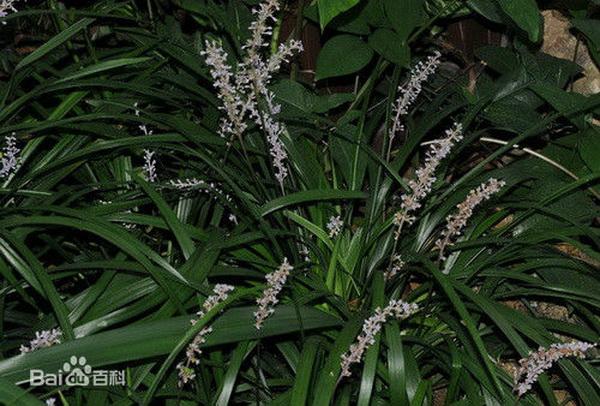
麦冬草的药用价值
在中药中,麦冬草的性味是甘、微苦、性微寒。麦冬草入药有着养肺的作用,麦冬草可以润肺清心,化痰止咳,还能抑制呕吐。《本草纲目》中认为麦冬是极好的养阴润肺的药品。麦冬还可以养胃,如果有厌食的情况,还可以用麦冬来开胃进食。
麦冬一般用来治疗肺燥干咳、心烦失眠、肠燥便秘等等症状。麦冬对心脑血管疾病也有很好的预防和治疗的作用,麦冬可以降低血糖、抗心律失常,对老年人非常好。但是麦冬不能长期服用,容易有副作用,要在医生的指导下服用。
麦冬草的园林作用
麦冬草虽然没有娇艳的花朵,麦冬草的花朵是非常朴素的淡紫色的,但是麦冬草十分容易种植,并且麦冬草一年四季都是常绿的,非常耐寒也非常耐旱,另一方面,麦冬草不容易发生病虫害,所以十分适合作为城市绿植。此外,虽然普通品种的麦冬草其貌不扬,但是近年来逐渐培养出了新品种的观赏价值较高的麦冬草,更加适合作为园林观赏。
麦冬草的经济价值
麦冬草的块茎有很多功效,是一种较为名贵的中草药,所以这是一种价值比较高的经济作物,在中医药中有广泛的作用。是具有一定的经济价值的。
0
0
文章
Miss Chen
2017年11月20日

Rosemary (Rosmarinus officinalis) can resist many pest and disease problems, but plants weakened or stressed may fall prey to problems. The shrub grows in U.S. Department of Agriculture plant hardiness zones 8 through 10, but it also thrives as a potted plant in any climate. Soil or site conditions are common problems, although pests and fungus can also kill rosemary. It can be difficult or even impossible to save rosemary once it begins to die, but quick diagnosis and treatment sometimes prove successful.

Winter Kill
Winter freezes can kill a rosemary shrub, but it may not become obvious until after the temperature begins to warm in spring. The evergreen sprigs begin losing their color, become dry and brittle, and eventually turn completely brown or yellow. (ref 3) Minor freeze damage only kills a few branches, allowing you to save the plant, while major damage kills the roots and plant entirely. Cut back the damaged branches to the nearest healthy wood using pruning shears disinfected with isopropyl alcohol. The healthy roots and remaining living branches will usually survive and put on new growth through spring and summer. Prevent future stress by growing the rosemary in a pot and overwintering it indoors, or by covering it with a frost blanket when short hard freezes are expected.
Water Stress
Locations that easily become wet or waterlogged slowly kill rosemary plants. Rosemary can tolerate more moisture in summer, but wet winter soil quickly kills the plant either by suffocating the roots or by freezing solid. Rosemary prefers well-drained soil and moderate moisture conditions. Dig up and transplant the shrub to a well-drained, full sun garden bed, or transplant it into a pot with bottom drainage holes. Water rosemary about once a week when there is no rainfall and when the top 1 to 2 inches of soil feels dry, providing no more than 1 inch of water at each irrigation.

Fungal Disease
Fungal issues typically go hand-in-hand with wet soil. Root and crown rot, caused by the Phytophthora spp. fungus, cause stunted growth or branch death. The rosemary sprigs yellow and dry out, while the base of the stem and roots become soft, mushy and produce a foul odor. Moving the rosemary to a site with better drainage and refraining from watering until after recovery may allow it to live if the roots aren't badly damaged, but most shrubs won't recover from root rot. Powdery mildew fungus, which forms as a white powder on the rosemary needles, favors dry conditions and warm temperatures between 60 and 80 degree Fahrenheit. Providing the rosemary with full, all-day sunlight and spraying the foliage with water early in the day to rinse away spores can minimize mildew issues. For extreme infections, cut out the mildewed branches with disinfected shears so the remaining healthy branches can recover.
Leaf and Stem Pests
Various pests feed on rosemary plants, including spittle bugs, aphids and whiteflies. Rosemary usually recovers from pest damage unless the infestation is severe or if the plant is already weakened by cold or water stress. Pear-shaped aphids feed on the underside of the stems. Spittle bugs leave behind a white, foamy residue that resembles spittle. Treat both by rinsing them off the rosemary with a sharp spray of water, or drench the plant with a ready-to-use insecticidal soap at five-day intervals until the pests are gone. Water sprays and soap products can also help control whiteflies. Spray the plants several times a day with water to discourage the flies and their larvae. Yellow sticky traps or reflective mulch spread around the rosemary may also minimize whitefly problems.
Chemical Damage
Premature needle death, yellowing of the needle tips or a general burned appearance may indicate chemical damage from herbicides, pesticides or improper fertilization. Herbicide drift, which occurs when the wind carries the spray beyond its intended target, causes leaf dieback or kills the entire plant. Pruning out the affected branches may allow the plant to recover if the chemicals haven't reached the roots. Excessive use of fertilizers can lead to the buildup of fertilizer salts in the soil, especially in container-grown plants. Watering the rosemary deeply so the excess moisture drains freely from the bottom of the pot at least once monthly during the summer helps flush out any excess salt.
Nutritional Deficiencies
Fertilizer is seldom necessary for a rosemary shrub, especially those grown in garden beds where the trace nutrients in the soil provide sufficient fertilization. Potted plants or those grown in exceptionally poor soil may be suffering from a nutrient deficiency if the plant grows slowly or develops stunted, pale yellow needles. An application of a general purpose fertilizer in early spring should provide enough nutrients to help the plant recover. Follow package instructions or mix 1/2 teaspoon of a soluble 24-8-16 blend with 1 gallon of water, and water the rosemary with the solution. Avoid applying fertilizer directly to the foliage because it can damage the needles.

Winter Kill
Winter freezes can kill a rosemary shrub, but it may not become obvious until after the temperature begins to warm in spring. The evergreen sprigs begin losing their color, become dry and brittle, and eventually turn completely brown or yellow. (ref 3) Minor freeze damage only kills a few branches, allowing you to save the plant, while major damage kills the roots and plant entirely. Cut back the damaged branches to the nearest healthy wood using pruning shears disinfected with isopropyl alcohol. The healthy roots and remaining living branches will usually survive and put on new growth through spring and summer. Prevent future stress by growing the rosemary in a pot and overwintering it indoors, or by covering it with a frost blanket when short hard freezes are expected.
Water Stress
Locations that easily become wet or waterlogged slowly kill rosemary plants. Rosemary can tolerate more moisture in summer, but wet winter soil quickly kills the plant either by suffocating the roots or by freezing solid. Rosemary prefers well-drained soil and moderate moisture conditions. Dig up and transplant the shrub to a well-drained, full sun garden bed, or transplant it into a pot with bottom drainage holes. Water rosemary about once a week when there is no rainfall and when the top 1 to 2 inches of soil feels dry, providing no more than 1 inch of water at each irrigation.

Fungal Disease
Fungal issues typically go hand-in-hand with wet soil. Root and crown rot, caused by the Phytophthora spp. fungus, cause stunted growth or branch death. The rosemary sprigs yellow and dry out, while the base of the stem and roots become soft, mushy and produce a foul odor. Moving the rosemary to a site with better drainage and refraining from watering until after recovery may allow it to live if the roots aren't badly damaged, but most shrubs won't recover from root rot. Powdery mildew fungus, which forms as a white powder on the rosemary needles, favors dry conditions and warm temperatures between 60 and 80 degree Fahrenheit. Providing the rosemary with full, all-day sunlight and spraying the foliage with water early in the day to rinse away spores can minimize mildew issues. For extreme infections, cut out the mildewed branches with disinfected shears so the remaining healthy branches can recover.
Leaf and Stem Pests
Various pests feed on rosemary plants, including spittle bugs, aphids and whiteflies. Rosemary usually recovers from pest damage unless the infestation is severe or if the plant is already weakened by cold or water stress. Pear-shaped aphids feed on the underside of the stems. Spittle bugs leave behind a white, foamy residue that resembles spittle. Treat both by rinsing them off the rosemary with a sharp spray of water, or drench the plant with a ready-to-use insecticidal soap at five-day intervals until the pests are gone. Water sprays and soap products can also help control whiteflies. Spray the plants several times a day with water to discourage the flies and their larvae. Yellow sticky traps or reflective mulch spread around the rosemary may also minimize whitefly problems.
Chemical Damage
Premature needle death, yellowing of the needle tips or a general burned appearance may indicate chemical damage from herbicides, pesticides or improper fertilization. Herbicide drift, which occurs when the wind carries the spray beyond its intended target, causes leaf dieback or kills the entire plant. Pruning out the affected branches may allow the plant to recover if the chemicals haven't reached the roots. Excessive use of fertilizers can lead to the buildup of fertilizer salts in the soil, especially in container-grown plants. Watering the rosemary deeply so the excess moisture drains freely from the bottom of the pot at least once monthly during the summer helps flush out any excess salt.
Nutritional Deficiencies
Fertilizer is seldom necessary for a rosemary shrub, especially those grown in garden beds where the trace nutrients in the soil provide sufficient fertilization. Potted plants or those grown in exceptionally poor soil may be suffering from a nutrient deficiency if the plant grows slowly or develops stunted, pale yellow needles. An application of a general purpose fertilizer in early spring should provide enough nutrients to help the plant recover. Follow package instructions or mix 1/2 teaspoon of a soluble 24-8-16 blend with 1 gallon of water, and water the rosemary with the solution. Avoid applying fertilizer directly to the foliage because it can damage the needles.
1
0
文章
Miss Chen
2017年11月16日

Growing strawberries (Fragaria × ananassa) requires some care, but the freshly picked, sweet, juicy fruits are worth the effort. Strawberries grow as perennials in U.S. Department of Agriculture plant hardiness zones 5 through 8, and in USDA zones 9 and 10 they're usually grown as cool-season, annual plants. Three kinds of are available: June-bearing, everlasting and day neutral. June-bearing strawberries fruit in early summer, everlasting varieties fruit in spring, summer and fall, and day neutral varieties bear fruit throughout the growing season. All three types grow best in full-sun sites and well-drained soils.

Soil, Light and Spacing
For the largest crop of fruits, grow strawberry plants in soil rich in organic matter and in a site that receives at least six hours of direct light per day. Space June-bearing strawberries 18 to 24 inches apart in rows 4 feet apart, and space everlasting and day neutral varieties 1 foot apart in a bed of two or three rows spaced 1 foot apart. June-bearing strawberries produce shoots called runners that root and grow into new plants on either side of their rows, creating strawberry beds 2 feet wide. Everlasting and day neutral strawberry plants produce few runners and these are removed, so they grow as single plants.
Water and Fertilizer
Moist growing sites and fertilizer encourage strawberries to grow healthily. Strawberries need about 1 inch of water each week when the weather is dry during the growing season. Apply the water to the base of the plants, avoiding the leaves. Over-fertilizing strawberries causes excessive leafy growth at the expense of fruit, but plants benefit from an annual fertilizer application after harvest. Dilute 2 tablespoons of a 10-10-10 liquid fertilizer in 1 gallon of water, and pour 1 to 2 cups of the solution at the base of each strawberry plant.
Mulch for Strawberries
Strawberries benefit from mulching, which suppresses weeds, conserves soil moisture and protects plants from frost. Remove weeds from around strawberry plants, and spread a 2-inch layer of an organic mulch such as garden compost or leaf mold, avoiding the plant stems. In areas where fall below 20 degrees Fahrenheit, spread a 3- to 4-inch layer of straw over plants in late fall. In spring, when young, yellow foliage appears, pull mulch away from the plants but replace it when frosts are predicted. Straw mulches can also be spread beneath developing fruit to keep it off the ground.

Strawberry Pruning
General care for strawberries includes pruning blossoms and runners. Pinch the blossoms off June-bearing strawberries in their first season to encourage the plants to develop strong root systems and bear a large crop the following year. Pinch the blossoms off everlasting and day neutral types until early July, which helps the plants establish before putting energy into growing fruit. Prune the runners from everlasting and day neutral plants whenever they appear. Sterilize pruning shears by wiping a cloth soaked in rubbing alcohol over the blades, and cut the runners where they join the rest of the plant. Sterilize the shears again when you've finished.
Strawberry Renovation
June-bearing strawberries growing as perennials provide crops for three or four years with annual renovation. After harvest, mow the strawberry beds to remove the old foliage. Set the mower blades to 1 to 1 1/2 inches above the ground. Rake off the leaves, and narrow the beds to 6 to 12 inches wide by digging out plants on both sides, and remove all weeds. Fertilize the strawberry plants with a granular or powder 10-10-10 fertilizer spread at a rate of 1 pound per 100 square feet, and mix the fertilizer lightly into the soil surface. Water the renovated patch for the rest of the growing season, applying 1 inch of water per week during dry weather.

Soil, Light and Spacing
For the largest crop of fruits, grow strawberry plants in soil rich in organic matter and in a site that receives at least six hours of direct light per day. Space June-bearing strawberries 18 to 24 inches apart in rows 4 feet apart, and space everlasting and day neutral varieties 1 foot apart in a bed of two or three rows spaced 1 foot apart. June-bearing strawberries produce shoots called runners that root and grow into new plants on either side of their rows, creating strawberry beds 2 feet wide. Everlasting and day neutral strawberry plants produce few runners and these are removed, so they grow as single plants.
Water and Fertilizer
Moist growing sites and fertilizer encourage strawberries to grow healthily. Strawberries need about 1 inch of water each week when the weather is dry during the growing season. Apply the water to the base of the plants, avoiding the leaves. Over-fertilizing strawberries causes excessive leafy growth at the expense of fruit, but plants benefit from an annual fertilizer application after harvest. Dilute 2 tablespoons of a 10-10-10 liquid fertilizer in 1 gallon of water, and pour 1 to 2 cups of the solution at the base of each strawberry plant.
Mulch for Strawberries
Strawberries benefit from mulching, which suppresses weeds, conserves soil moisture and protects plants from frost. Remove weeds from around strawberry plants, and spread a 2-inch layer of an organic mulch such as garden compost or leaf mold, avoiding the plant stems. In areas where fall below 20 degrees Fahrenheit, spread a 3- to 4-inch layer of straw over plants in late fall. In spring, when young, yellow foliage appears, pull mulch away from the plants but replace it when frosts are predicted. Straw mulches can also be spread beneath developing fruit to keep it off the ground.

Strawberry Pruning
General care for strawberries includes pruning blossoms and runners. Pinch the blossoms off June-bearing strawberries in their first season to encourage the plants to develop strong root systems and bear a large crop the following year. Pinch the blossoms off everlasting and day neutral types until early July, which helps the plants establish before putting energy into growing fruit. Prune the runners from everlasting and day neutral plants whenever they appear. Sterilize pruning shears by wiping a cloth soaked in rubbing alcohol over the blades, and cut the runners where they join the rest of the plant. Sterilize the shears again when you've finished.
Strawberry Renovation
June-bearing strawberries growing as perennials provide crops for three or four years with annual renovation. After harvest, mow the strawberry beds to remove the old foliage. Set the mower blades to 1 to 1 1/2 inches above the ground. Rake off the leaves, and narrow the beds to 6 to 12 inches wide by digging out plants on both sides, and remove all weeds. Fertilize the strawberry plants with a granular or powder 10-10-10 fertilizer spread at a rate of 1 pound per 100 square feet, and mix the fertilizer lightly into the soil surface. Water the renovated patch for the rest of the growing season, applying 1 inch of water per week during dry weather.
1
0
文章
Miss Chen
2017年11月10日

Pests are attracted to garden strawberries (Fragaria x ananassa) as much as people are, but companion plants help keep pests at bay. Strawberries grow as perennials in U.S. Department of Agriculture plant hardiness zones 5 through 8 and as annuals in warmer zones. Companion plants for strawberries deter and distract pests, and host beneficial insects, but they don't compete with strawberries for light or nutrients. Space strawberries and their companions according to their final growth dimensions.

Herb Choices
Strawberries thrive in gardens with annual and perennial herb companions. Borage (Borago officinalis) helps strawberries resist insects and diseases, and common thyme (Thymus vulgaris) deters worms, according to a Michigan State University Extension in Kalamazoo County article. Borage is an annual herb that grows 12 to 36 inches tall and 9 to 18 inches wide; it bears bright-blue, star-shaped flowers in summer. Common thyme, which is hardy in USDA zones 5 through 9, grows 6 to 12 inches tall and wide, and bears tiny, lilac flowers from late spring through early summer. Another herb companion for strawberries is oregano (Origanum vulgare). Hardy in USDA zones 4 through 9, oregano varieties range from low, spreading mats to upright, bushes. They bear pink, purple or white flowers.
Vegetable Selections
In the vegetable patch, strawberries' companion plants include onion (Allium cepa), lettuce (Lactuca sativa) and spinach (Spinacia oleracea). Growing 12 to 18 inches tall and 6 to 12 inches wide, onion is grown for its flavorful, aromatic bulbs and leaves; it is harvested as an annual crop. Lettuce and spinach grow 6 to 12 inches tall and wide; they are annual plants. Lettuce varieties include romaine, iceberg, loose leaf and butterhead. A cool-weather vegetable, spinach is an upright plant with leaves rich in iron, phosphorus and vitamins A, B and C. Grow strawberries and vegetable companion plants in alternate rows for their maximum benefit.

Annual Flowering Varieties
Annual flowering plants attract beneficial insects to strawberries they are near. Nasturtium (Tropaeolum spp.) grows 1 to 10 feet tall and 1 to 3 feet wide, depending on the species and cultivar, and bears cream, yellow, orange or red flowers with a spicy fragrance in spring through fall. Marigold (Calendula officinalis), growing 1 to 2 feet tall and wide, bears chrysanthemum-resembling, deep-orange to yellow, early summer flowers that bloom through fall in cool climates. Both of these annuals grow readily from seeds sown directly in the ground just before the average final frost date, and they reseed in favorable conditions.
Perennial Flowering Options
Strawberries are productive ground-cover plants in garden borders with perennial companions. Pincushion flower "Butterfly Blue" (Scabiosa "Butterfly Blue") and speedwell "Foxy Lady" (Veronica "Foxy Lady") thrive in the same full-sun sites and moist, well-drained soil in which strawberries do well. Hardy in USDA zones 5 through 9, "Butterfly Blue" grows 12 to 18 inches tall and wide. It bears 2-inch, lavender-blue, pincushionlike flowers spring through fall and into winter in mild climates. "Foxy Lady," which is hardy in USDA zones 4 through 8, grows 12 to 18 inches tall and 9 to 12 inches wide. It produces 12- to 15-inch spikes of fuschia-pink and white flowers in summer.

Herb Choices
Strawberries thrive in gardens with annual and perennial herb companions. Borage (Borago officinalis) helps strawberries resist insects and diseases, and common thyme (Thymus vulgaris) deters worms, according to a Michigan State University Extension in Kalamazoo County article. Borage is an annual herb that grows 12 to 36 inches tall and 9 to 18 inches wide; it bears bright-blue, star-shaped flowers in summer. Common thyme, which is hardy in USDA zones 5 through 9, grows 6 to 12 inches tall and wide, and bears tiny, lilac flowers from late spring through early summer. Another herb companion for strawberries is oregano (Origanum vulgare). Hardy in USDA zones 4 through 9, oregano varieties range from low, spreading mats to upright, bushes. They bear pink, purple or white flowers.
Vegetable Selections
In the vegetable patch, strawberries' companion plants include onion (Allium cepa), lettuce (Lactuca sativa) and spinach (Spinacia oleracea). Growing 12 to 18 inches tall and 6 to 12 inches wide, onion is grown for its flavorful, aromatic bulbs and leaves; it is harvested as an annual crop. Lettuce and spinach grow 6 to 12 inches tall and wide; they are annual plants. Lettuce varieties include romaine, iceberg, loose leaf and butterhead. A cool-weather vegetable, spinach is an upright plant with leaves rich in iron, phosphorus and vitamins A, B and C. Grow strawberries and vegetable companion plants in alternate rows for their maximum benefit.

Annual Flowering Varieties
Annual flowering plants attract beneficial insects to strawberries they are near. Nasturtium (Tropaeolum spp.) grows 1 to 10 feet tall and 1 to 3 feet wide, depending on the species and cultivar, and bears cream, yellow, orange or red flowers with a spicy fragrance in spring through fall. Marigold (Calendula officinalis), growing 1 to 2 feet tall and wide, bears chrysanthemum-resembling, deep-orange to yellow, early summer flowers that bloom through fall in cool climates. Both of these annuals grow readily from seeds sown directly in the ground just before the average final frost date, and they reseed in favorable conditions.
Perennial Flowering Options
Strawberries are productive ground-cover plants in garden borders with perennial companions. Pincushion flower "Butterfly Blue" (Scabiosa "Butterfly Blue") and speedwell "Foxy Lady" (Veronica "Foxy Lady") thrive in the same full-sun sites and moist, well-drained soil in which strawberries do well. Hardy in USDA zones 5 through 9, "Butterfly Blue" grows 12 to 18 inches tall and wide. It bears 2-inch, lavender-blue, pincushionlike flowers spring through fall and into winter in mild climates. "Foxy Lady," which is hardy in USDA zones 4 through 8, grows 12 to 18 inches tall and 9 to 12 inches wide. It produces 12- to 15-inch spikes of fuschia-pink and white flowers in summer.
0
0
文章
Miss Chen
2017年11月05日

Blueberries, namely the Northern highbush blueberry (Vaccinium corymbosum), is the bush most commonly cultivated throughout the United States. It is hardy in U.S. Department of Agriculture zones 4 through 8, and when mature, produces small, round, dark blue berries that, with proper care and harvest, can be very sweet. The sweetness of blueberries depends primarily on harvesting at the right time and proper bush care. You can sometimes ripen blueberries after they are harvested, but most of the sugar production occurs prior to picking.

Knowing When to Harvest
Blueberries are the sweetest if they are left to ripen fully on the bush. Once berries have turned fully blue -- with no white, green or red parts or stems -- they are ready to harvest three to seven days later. Properly ripe blueberries will also be slightly dull-looking and not shiny. Fully ripe berries should fall off of the bush easily. Tickle the bunches of fruit to remove fully ripe berries while leaving the others to ripen longer.
Ripening After Harvest
Harvested white, red or green berries will not continue to ripen. In some cases, you can ripen berries that have already turned blue by placing them in a closed paper bag in a dark location. A paper bag traps the gas the berries produces but still allows air flow. Although this method will cause berries to become softer and juicier, the berries will not turn any sweeter. Do not wash berries until immediately before eating or freezing.
Watching Water
Too much water can cause blueberries to become bloated with a mild rather than intense sweet flavor. In many cases, blueberries are often sweeter during years that receive less rainfall as the sugars in the fruits are more concentrated. Because of this, avoid over-irrigation. Water blueberry plants during the day, keeping the soil evenly moist but not saturated. During the growing season, water 1 inch per week and 4 inches per week when the fruit is setting and ripening. Water the plant evenly on all sides. Water deeply once every couple of days rather than a shallow watering daily. Deep watering encourages a stronger root structure, ensuring a healthier plant.

Selecting Sites for Sun and Soil
For berries to ripen well and fully, they require regular sun exposure as well as proper nutrition for the plant. Blueberries grow best in direct sunlight. Not enough sun can cause berries to be perpetually tart rather than sweet as sunlight is needed for sugar production in the fruit. Blueberries thrive in well-draining soil and they do well in acidic soil, with a pH level of 4.5 to 5. If a soil test shows the soil is not sufficiently acidic, amend it with sulfur or peat moss to encourage a lower soil pH.

Knowing When to Harvest
Blueberries are the sweetest if they are left to ripen fully on the bush. Once berries have turned fully blue -- with no white, green or red parts or stems -- they are ready to harvest three to seven days later. Properly ripe blueberries will also be slightly dull-looking and not shiny. Fully ripe berries should fall off of the bush easily. Tickle the bunches of fruit to remove fully ripe berries while leaving the others to ripen longer.
Ripening After Harvest
Harvested white, red or green berries will not continue to ripen. In some cases, you can ripen berries that have already turned blue by placing them in a closed paper bag in a dark location. A paper bag traps the gas the berries produces but still allows air flow. Although this method will cause berries to become softer and juicier, the berries will not turn any sweeter. Do not wash berries until immediately before eating or freezing.
Watching Water
Too much water can cause blueberries to become bloated with a mild rather than intense sweet flavor. In many cases, blueberries are often sweeter during years that receive less rainfall as the sugars in the fruits are more concentrated. Because of this, avoid over-irrigation. Water blueberry plants during the day, keeping the soil evenly moist but not saturated. During the growing season, water 1 inch per week and 4 inches per week when the fruit is setting and ripening. Water the plant evenly on all sides. Water deeply once every couple of days rather than a shallow watering daily. Deep watering encourages a stronger root structure, ensuring a healthier plant.

Selecting Sites for Sun and Soil
For berries to ripen well and fully, they require regular sun exposure as well as proper nutrition for the plant. Blueberries grow best in direct sunlight. Not enough sun can cause berries to be perpetually tart rather than sweet as sunlight is needed for sugar production in the fruit. Blueberries thrive in well-draining soil and they do well in acidic soil, with a pH level of 4.5 to 5. If a soil test shows the soil is not sufficiently acidic, amend it with sulfur or peat moss to encourage a lower soil pH.
0
0





